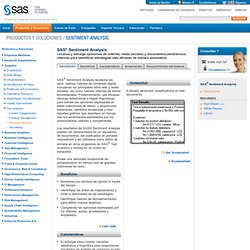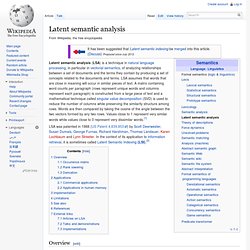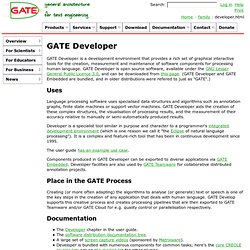

Spanish and Catalan WordNets - NLP Research Group. Spanish and Catalan Wordnets follow the EuroWordNet framework and ire structured in the same way as the American wordnet for English ( Princeton WordNet ) in terms of synsets (sets of synonymous words) with basic semantic relations between them. Spanish and Catalan nouns, verbs and adjectives are organized into synonym sets, each representing one underlying lexical concept. Different relations links the synonym sets. The Spanish and Catalan WordNets also represent a set of unique language-internal system of lexicalizations.
The initial version of the Spanish WN was developed in the framework of the EWN project using WN1.5 as ILI. The resulting wordnet was released through ELRA, and it still is nowadays. After EWN project, we continued developing the Spanish WN thanks to additional funding from public and private projects. The MCR-3.0 project includes a new version of Spanish WN, linked to Princeton WN 3.0, and distributed under a free license. Sentiment Analysis. SAS® Sentiment Analysis recolecta (es decir, rastrea) fuentes de contenido digital, incluyendo los principales sitios web y redes sociales, así como fuentes internas de textos empresariales.

Posteriormente, usa eficaces técnicas estadísticas y reglas lingüísticas para extraer las opiniones expresadas en estas colecciones de textos, y proporciona resúmenes, identifica tendencias y crea reportes gráficos que describen en tiempo real los sentimientos expresados por los consumidores, clientes y competidores. Los resultados de SAS® Sentiment Analysis pueden ser almacenados en un repositorio de documentos, ser publicados en portales corporativos y ser utilizados como datos de entrada en otros programas de SAS® Text Analytics o incluso en un motor de búsqueda. Posee una velocidad excepcional de procesamiento en tiempo real de grandes volúmenes de texto. Beneficios Leer más Características Leer más. Sentiment analysis. Sentiment analysis (also known as opinion mining) refers to the use of natural language processing, text analysis and computational linguistics to identify and extract subjective information in source materials.

Generally speaking, sentiment analysis aims to determine the attitude of a speaker or a writer with respect to some topic or the overall contextual polarity of a document. The attitude may be his or her judgment or evaluation (see appraisal theory), affective state (that is to say, the emotional state of the author when writing), or the intended emotional communication (that is to say, the emotional effect the author wishes to have on the reader). Subtasks[edit] A basic task in sentiment analysis[1] is classifying the polarity of a given text at the document, sentence, or feature/aspect level — whether the expressed opinion in a document, a sentence or an entity feature/aspect is positive, negative, or neutral.
Methods and features[edit] Evaluation[edit] References[edit] Papers. Latent semantic analysis. Latent semantic analysis (LSA) is a technique in natural language processing, in particular in vectorial semantics, of analyzing relationships between a set of documents and the terms they contain by producing a set of concepts related to the documents and terms.

LSA assumes that words that are close in meaning will occur in similar pieces of text. A matrix containing word counts per paragraph (rows represent unique words and columns represent each paragraph) is constructed from a large piece of text and a mathematical technique called singular value decomposition (SVD) is used to reduce the number of columns while preserving the similarity structure among rows. Words are then compared by taking the cosine of the angle between the two vectors formed by any two rows. Values close to 1 represent very similar words while values close to 0 represent very dissimilar words.[1] Overview[edit] Occurrence matrix[edit] Rank lowering[edit]
WhatTheTrend - popular twitter trends. Twitrratr. Real Time Search - Social Mention. Services. Family/developer. GATE Developer is a development environment that provides a rich set of graphical interactive tools for the creation, measurement and maintenance of software components for processing human language.

GATE Developer is open source software, available under the GNU Lesser General Public Licence 3.0, and can be downloaded from this page. (GATE Developer and GATE Embedded are bundled, and in older distributions were refered to just as "GATE".) Uses Language processing software uses specialised data structures and algorithms such as annotation graphs, finite state machines or support vector machines. GATE Developer aids the creation of these complex structures, the visualisation of processing results, and the measurement of their accuracy relative to manually or semi-automatically produced results. Developer is a specialist tool similar in purpose and character to a programmer's integrated development environment (which is one reason we call it "the Eclipse of natural language processing").
Balie - Baseline Information Extraction. LingPipe Home. How Can We Help You?

Get the latest version: Free and Paid Licenses/DownloadsLearn how to use LingPipe: Tutorials Get expert help using LingPipe: Services Join us on Facebook What is LingPipe? LingPipe is tool kit for processing text using computational linguistics. LingPipe is used to do tasks like: Find the names of people, organizations or locations in newsAutomatically classify Twitter search results into categoriesSuggest correct spellings of queries. Twitter-as-a-Corpus-for-Sentiment-Analysis-and-Opinion-Mining.pdf (objeto application/pdf) Rapid - I. Sentiment140 - A Twitter Sentiment Analysis Tool. TweetFeel Twitter Sentiment - Twitter Search with Feelings about anything popular.